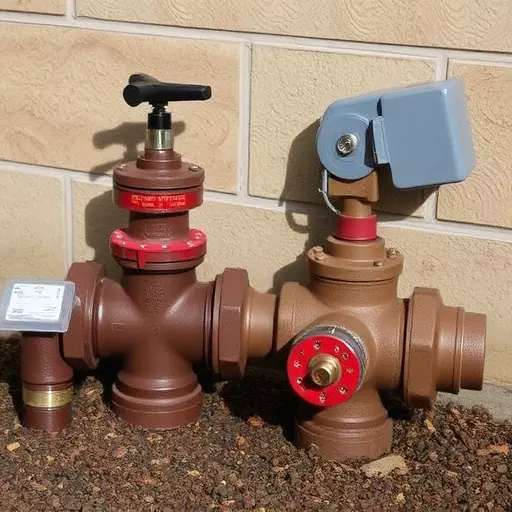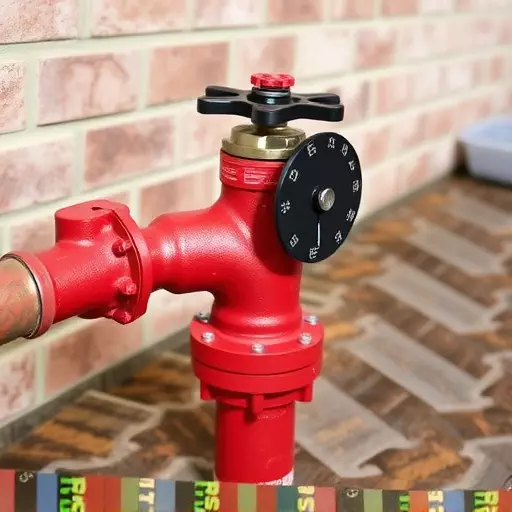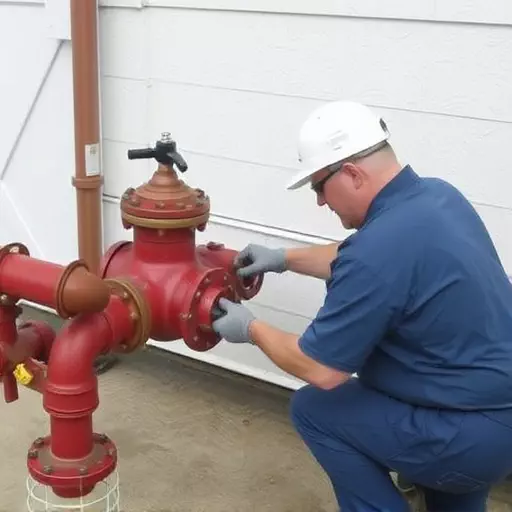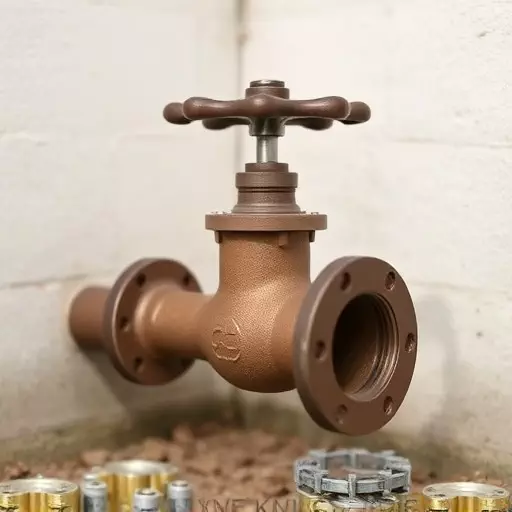Backflow Preventer Testing Spring Lake is a vital annual safety measure for commercial properties. Regulatory requirements mandate inspections to ensure these devices stop contaminated water from entering potable supplies, safeguarding lives and property from fire. Trained professionals identify potential issues like leaks, blockages, or damage during rigorous testing, verifying device functionality and installation integrity. Regular testing keeps sprinkler systems reliable, prevents water contamination, and ensures compliance with local fire codes. Overlooking these inspections poses hazards, emphasizing the importance of professional commercial backflow preventer maintenance for secure environments.
In the pursuit of optimal fire safety, understanding and adhering to rigorous standards in Spring Lake is paramount. Fire sprinkler systems, integral to any structure’s defense against flames, rely on crucial components known as backflow preventers. This comprehensive guide delves into the essential aspects of backflow preventer testing, including annual inspections, commercial inspection procedures, identifying common issues, and ensuring compliance for fire sprinkler systems in Spring Lake.
- Understanding Fire Sprinkler Backflow Testing: A Comprehensive Overview
- The Role of Backflow Preventers in Fire Safety
- Annual Backflow Preventer Testing: Why It's Essential
- Commercial Backflow Preventer Inspection Procedures
- Common Issues Found During Backflow Testing
- Ensuring Compliance: Maintaining Your Fire Sprinkler System
Understanding Fire Sprinkler Backflow Testing: A Comprehensive Overview

Fire sprinkler backflow testing is a critical safety measure that ensures the efficient and effective operation of your building’s fire suppression system. In Spring Lake, annual backflow preventer testing is not just a regulatory requirement but a vital step in protecting lives and property from the devastating effects of fire. This rigorous process involves evaluating the integrity of backflow preventers, devices designed to stop contaminated water from flowing back into potable water supplies.
During a commercial backflow preventer inspection, trained professionals assess the condition of these critical components, verify proper installation, and ensure they are functioning optimally. By maintaining up-to-date records of backflow preventer testing Spring Lake, property owners and managers demonstrate their commitment to safety and compliance with local fire codes. This proactive approach allows for early identification and resolution of any potential issues, ultimately contributing to a more secure environment.
The Role of Backflow Preventers in Fire Safety

Backflow preventers play a vital role in fire safety, especially in commercial and industrial settings. These devices are designed to stop or limit the flow of water back into the main supply line, ensuring that contaminated or flammable liquids don’t enter and potentially cause harm during a fire event. In Spring Lake, annual backflow preventer testing is not just a regulatory requirement but a critical measure to maintain safety. Commercial backflow preventer inspection is a proactive step to identify any potential issues, as these devices can fail, leading to severe consequences in emergency situations.
Regular testing and maintenance of backflow preventers are essential to guarantee their proper functioning. During these tests, the devices are rigorously examined for leaks, blockages, or damage, ensuring they operate as intended when needed most. The process involves specialized technicians who understand the intricacies of backflow preventer mechanics, allowing them to provide accurate assessments and recommendations for any required repairs or replacements.
Annual Backflow Preventer Testing: Why It's Essential

In the world of fire safety, ensuring the reliability of your sprinkler system is paramount. This is where annual Backflow Preventer Testing in Spring Lake comes into play as an indispensable practice. Commercial buildings and properties must adhere to strict regulations regarding backflow prevention to safeguard against contaminated water flowing back into the main supply. A Backflow Preventer (BFP) inspection is a crucial process that verifies these devices are functioning correctly, maintaining the integrity of the water system.
Regular annual testing is essential for several reasons. First and foremost, it identifies any potential issues or failures within the BFP, allowing for prompt repairs and replacements. This proactive approach ensures the sprinkler system remains ready to deploy in case of a fire emergency. Moreover, it provides peace of mind for property owners and managers by confirming compliance with local fire safety codes, thus avoiding fines and legal complications.
Commercial Backflow Preventer Inspection Procedures

In the context of fire safety, Commercial Backflow Preventer Inspection Procedures are a critical aspect of maintaining secure and compliant commercial spaces in Spring Lake. These inspections ensure that backflow preventers function as intended, stopping contaminated water from flowing back into potable water supplies. During annual backflow preventer testing, professionals meticulously assess each device for any signs of damage, corrosion, or malfunction. This process involves checking the integrity of seals, testing pressure levels, and verifying proper installation to guarantee a robust defense against potential contaminants.
Regular assessments are mandated by local regulations to safeguard both building occupants and the broader community’s water supply. Property owners and managers in Spring Lake must prioritize these annual inspections, as they play a pivotal role in preventing backflow incidents. By adhering to established testing protocols, businesses can ensure their fire sprinkler systems remain reliable, contributing to a safer environment for all.
Common Issues Found During Backflow Testing

During backflow preventer testing in Spring Lake, several common issues are often encountered. One of the primary concerns is the detection of leaks within the system, which can compromise the integrity of the backflow device and lead to potential water contamination. These leaks may originate from various components, such as faulty connections, worn-out gaskets, or damaged pipes. Regular inspection and prompt repair of these issues are vital to ensure the continuous effectiveness of the backflow preventer.
Another frequent problem is the misalignment or incorrect installation of the backflow preventer. This can result in a false reading during testing, indicating that the device is functioning when, in reality, it may be compromised. Annual backflow preventer testing and commercial backflow preventer inspections are crucial to identify these issues early on. Proper maintenance and adherence to local regulations, such as those requiring regular testing for fire sprinkler backflow devices, can help avoid serious water quality problems and ensure the safety of both residential and commercial properties in Spring Lake.
Ensuring Compliance: Maintaining Your Fire Sprinkler System

Fire sprinkler systems are critical components in ensuring safety for both residential and commercial spaces. To maintain their effectiveness, regular maintenance and compliance checks are paramount, especially focusing on backflow preventer testing Spring Lake areas. Annual backflow preventer testing is a crucial step to guarantee these systems function optimally when needed. This process involves inspecting the commercial backflow preventer to ensure it’s in top condition and capable of containing water pressure.
Property owners and managers must not overlook the significance of these tests, as they safeguard against potential hazards like water contamination and system failure. Compliance with local regulations, which often mandate annual inspections, is essential. Professional backflow prevention experts can conduct these tests, ensuring your Spring Lake property’s fire sprinkler system remains a reliable life safety measure.


